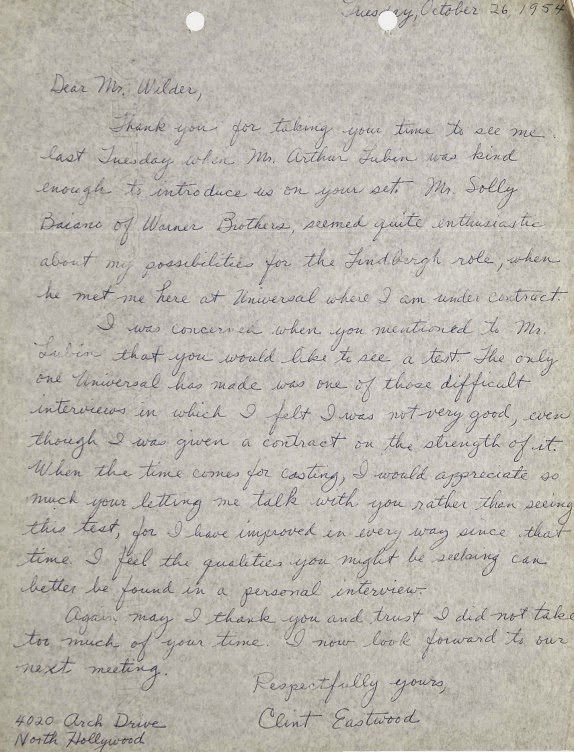Clara Bow was one of the greatest stars of the 1920s. She was the ultimate flapper, the original "It girl" and Hollywood's first sex symbol. An extremely popular actress in her time, Bow received more than 45,000 fan letters per month, a number seldom equalled. Born in 1905 in Brooklyn, New York, Bow grew up in poverty with a sexually abusive father and a schizophrenic mother. To escape her miserable life, Bow found comfort in movies ("For the first time in my life I knew there was beauty in the world"). She dreamed of being an actress and, after winning an acting contest, made her film debut at age 16. Between 1922 and 1933, she starred in 57 films, including box-office hits like Mantrap (1926), It (1927) and Wings (1927). It was the film that made her a star and gave her the nickname the "It girl".
Although Clara Bow was adored by the public, she was shunned by Hollywood. Actors like Douglas Fairbanks jr., Mary Pickford and Marion Davies, who belonged to Hollywood's high society, distanced themselves from her, thinking she was vulgar and bad-mannered. And Bow's studio, Paramount, was none too happy with her unconventional lifestyle and the scandals that surrounded her (scandals that involved her public love affairs, her gambling addiction etc.). The tabloids, meanwhile, were having a field day covering Bow's life in detail. Eventually, Bow couldn't handle the pressures of Hollywood anymore and retired from acting in 1933 at age 28. She left California and moved to Nevada with actor husband Rex Bell with whom she had two sons. By that time, Bow had already been showing signs of mental illness and was ultimately diagnosed with schizophrenia (like her mother). In 1950, Bow separated from her husband, moved back to California and spent the last 15 years of her life in seclusion, all the while struggling with her mental health. She died of a heart attack in 1965, 60 years old.
In the early 1950s, Clara Bow became a fan of upcoming star Marlon Brando. Until then, Bow's favourite actor had been Gilbert Roland (her ex-fiancé), but in Brando she found a new favourite actor. According to David Stenn (author of Clara Bow: Runnin' Wild (1988)), Bow met her new idol somewhere in the mid-50s. After she discovered that Brando was a fan of hers, she visited him at his home (leaving her house was something she would only rarely do). Bow and Brando reportedly enjoyed their meeting, and Brando later sent the retired actress a signed photo with the inscription: "For Clara Bow Bell, a memorable personality who has given so much to so many. With sincere respects, Marlon Brando".
Written before they met, Clara Bow sent the following letter to Marlon Brando in December 1954 (it's actually a lengthy message written on a Christmas card). In it, Bow asks Brando for a new autographed photo. Apparently Brando had sent her one in 1952, but the ink on it had faded ("You didn't by any chance write with vanishing ink, did you?"). What is quite interesting is that, apart from being a fan letter, Bow also touches upon her Hollywood days, mentioning her wild behaviour, Paramount and Hollywood's social elite.
Source: heritage auctions/ image reproduced with permission
Transcript:
1954
Dear Mr. Brando,
May I at this time, again, congratulate you on your superb performances in "On the Waterfront" and "Desiree".
I know how busy you are with your career, but if in the future, you take ten, I'd appreciate a new autographed photo from my favorite artist. The one you autographed and sent me almost two years ago is still framed and on my dressing table, but the writing on it has almost vanished- for what reason I can't understand- thus the above request. You didn't by any chance write with vanishing ink, did you? Although we have never met personally I feel as we did. I know two of your friends, however, and they told me how much you enjoyed playing tricks on them. I adore a good sense of humor, wit and whimsy in people, so I would not mind a past photo written in vanishing ink. -When I was in my teens and even older I did things that most people considered crazy, wild and unconvential [sic]! Paramount raised hell when they found out I was rolling-skating [sic] on the streets of Beverly Hills. I still went on skating, nevertheless, I liked doing it and could not understand the consternation I provoked in the studio- heads hearts [??] I don't need to tell you that the so-called social elite of Hollywood snubbed me, and you know what- I didn't give a hoot! Don't forget that new photo and this time- no ink that disappears into thin air- please Marlon B. Sincerely, Clara Bow  |
| A rare photo of Clara Bow from the 1950s, and Bow's idol: hunky Marlon Brando |
*I must admit that I never knew much about Clara Bow. I am no fan of silent films and have so far only seen a couple of Charlie Chaplin pictures. But my curiosity is now piqued and I will definitely check out her films!
This is my contribution to the CMBA Blogathon "Forgotten Stars". Click here to see all the other entries!
























.jpg)





